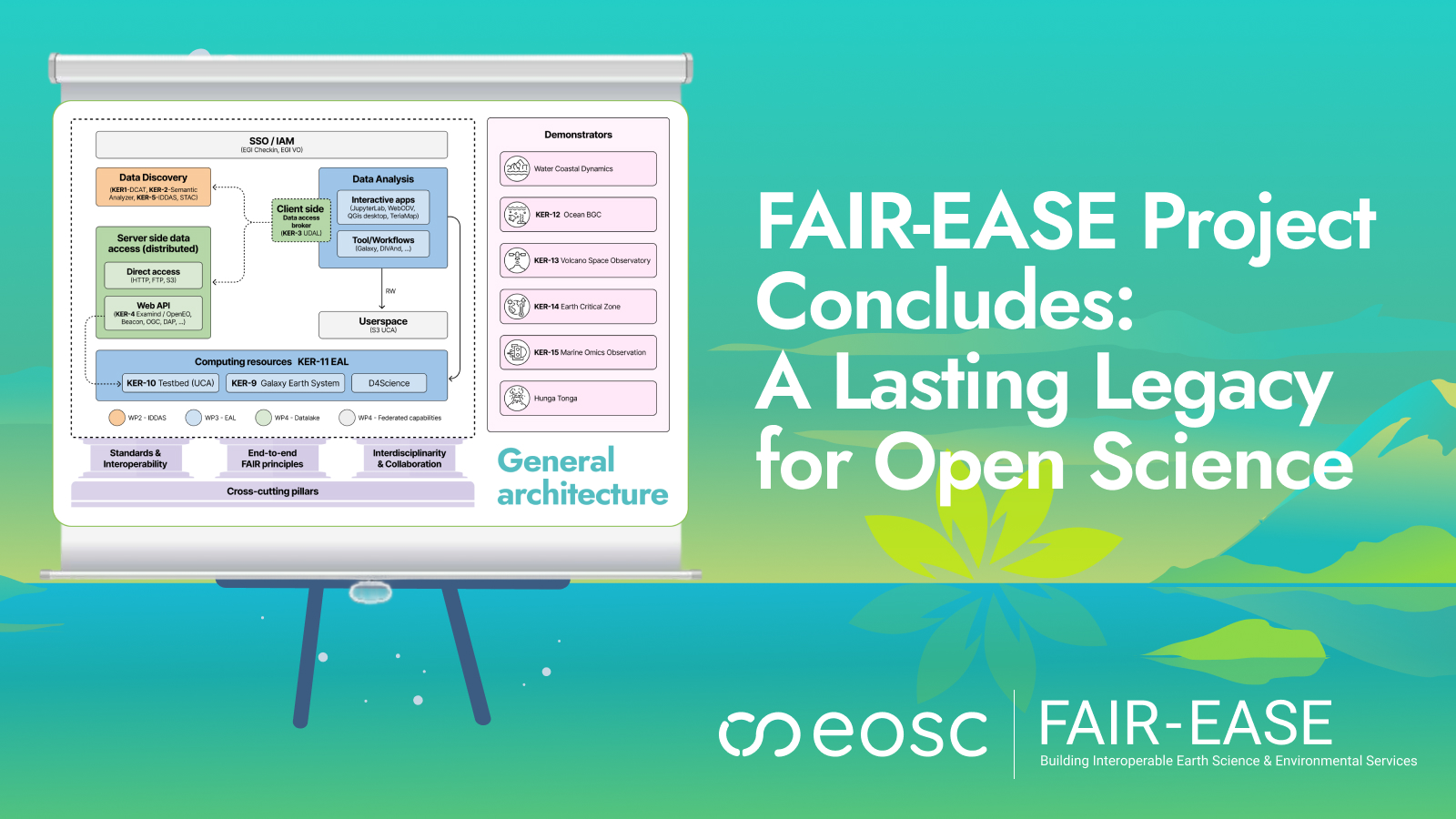FAIR-EASE Project Concludes: A Lasting Legacy for Open Science

Driving FAIR and Open Science in Earth and Environmental Research
Launched in September 2022, FAIR-EASE set out to customise and operate integrated and distributed services for the observation and modelling of the Earth System, environment, and biodiversity. Its objectives were to improve data discovery and access, enable remote analysis and processing of heterogeneous data, and demonstrate practical applications through dedicated use cases. Achieved in close cooperation with user communities, EOSC, and research infrastructures, these objectives strengthened Europe’s capacity to share, reuse, and exploit scientific data according to the FAIR principles.
Key Results and Outcomes
A cornerstone achievement of FAIR-EASE is the consolidation of 16 Key Exploitable Results (KERs), each reaching a high level of technological readiness (TRL 7–9). These results have been structured into five thematic categories — Data Discovery, Data Access, Data Analysis, Demonstrators, and FAIR Principles — making it easier for stakeholders to navigate and identify resources of interest. Each KER is presented on its own webpage enriched with documentation, multimedia content, Jupyter Books, and GitHub repositories, supporting transparency, reproducibility, and reusability.
FAIR-EASE also placed strong emphasis on open science practices. All deliverables have been published on Zenodo within a dedicated community, ensuring visibility and accessibility beyond the project’s lifetime. In addition, 18 posters were produced to present pilots, tools, and results in a clear and engaging way for a broad audience.
Sustainability and Long-Term Impact
FAIR-EASE results have been developed with a strong focus on sustainability. By aligning with the evolving EOSC Federation, the project has paved the way for the integration of its outputs into national and thematic nodes such as Data Terra and Blue-Cloud 2026, as well as related initiatives including EuroScienceGateway, and FAIR-IMPACT. This collaborative model ensures that FAIR-EASE outcomes will remain relevant, interoperable, and usable by diverse communities. In doing so, the project contributes directly to the EOSC Strategic Research and Innovation Agenda, helping to establish open, federated infrastructures for science in Europe.
Explore the FAIR-EASE Results
With its conclusion, FAIR-EASE leaves behind a strong and sustainable legacy for the scientific community. We invite you to:
- Explore the dedicated Results section to access all Key Exploitable Results and their resources.
- Browse the collection of Posters and Deliverables that showcase the breadth of tools, pilots, and outcomes developed during the project.
FAIR-EASE has successfully expanded its community, strengthened European research infrastructures, and created clear pathways for lasting impact. Its results will continue to support the advancement of FAIR and Open Science practices well into the future.